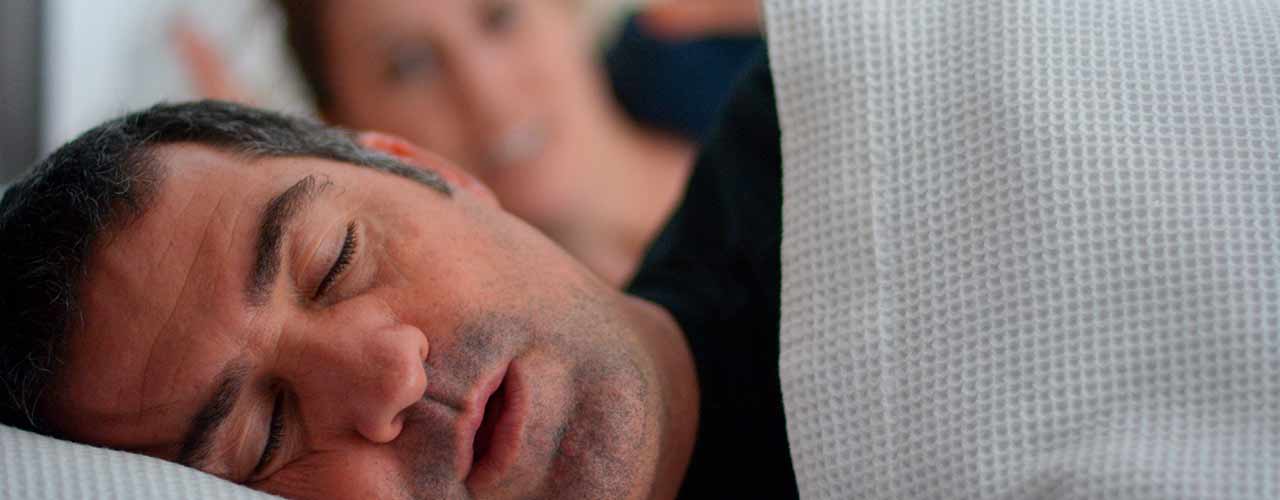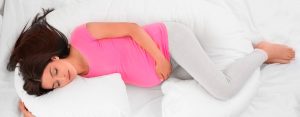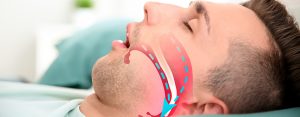No one likes to hear other people snore, right? But really, what is snoring? It is the noisy breathing that occurs during sleep, a sound caused by the vibration of the pharyngeal tissues when air goes through that region.
There are several causes of loud snoring, among them: flaccid throat muscles; tonsillitis; very large tonsils;deviated nasal septum; nasal polyps; sinusitis; nasal obstruction; alcohol consumption, as it relaxes the muscles; obesity and fat accumulation in the neck area; smoking; gastroesophageal reflux, ; dental arch problems;and sleeping on your back. Additionally, it is very common in males.

Therefore, if you snore and present some of the following symptoms, look for a healthcare practitioner as soon as possible:
- Non-restorative sleep (that is, you still feel tired throughout the day).
- Frequent awakenings during the night (nobody deserves this, right?).
- Cognitive disturbances such as problems with memory, concentration, and attention.
- Irritability.
- Fatigue.
- Excessive daytime drowsiness (the good old “you nod off as soon as you sit down”).
- Decreased libido and sexual impotence.
To avoid snoring, certain measures could be implemented, such as:
- Trying to sleep on your side while also using the appropriate mattress and pillow.
- Seeking specialized help, such as a physician or a dentist, and follow their recommendations in case of nasal obstruction, rhinitis, allergies, gastroesophageal reflux, , or bruxism (to grind your teeth while you sleep), among others.
- Maintaining a healthy weight.
- Avoiding smoking and alcohol consumption.
- Engaging in physical activities.
Snoring and Obstructive Sleep Apnea
In order to treat snoring, it is crucial to discover the cause since it is extremely important not only for us but also for the people around us. Snoring can be a sign of a more severe problem: Obstructive Sleep Apnea (OSA). It is a condition characterized by the obstruction of the upper airways during sleep. Usually, this obstruction is accompanied by a decrease in blood oxygen saturation, followed by a brief awakening during the night to breathe.
These breathing pauses average 20 seconds and may last up to 2 minutes. In serious cases, this event may occur hundreds of times during sleep. Obstructive sleep apnea is a risk factor for cardiovascular diseases such as hypertension, myocardial infarction, stroke and arrhythmia.
To diagnose the disease, the healthcare practitioner may request tests that monitor the patient's sleep. In addition to the well-known polysomnography, which requires sleeping in a hospital or sleep lab and using several sensors, there is another alternative for Digital Monitoring of Sleep Apnea: Biologix. This is a test that can be performed at home, simple, practical, and effective. At bedtime, the patient only needs to place the Oxistar sensor®, a high-performance oximeter, on their finger and start the test in the Biologix app. Upon waking up the next morning, just press "Finish test" and the result will be available in a matter of seconds. Simple, is it not?
As previously mentioned, polysomnography is an exam carried out while the patient sleeps one night in a sleep lab. The patient is monitored with sensors that record the airflow through the nose and mouth, blood oxygenation, heart rate, brain activity, and movements of the chest and limbs.
Why is so much information needed? These figures are used to determine if you have obstructive sleep apnea or any related disorders such as central apnea, bruxism, restless legs syndrome, somnambulism, night terror, and fibromyalgia, among others.
The goal of treating obstructive sleep apnea is to always keep the airways open for adequate breathing during sleep. Even though there are several available treatments for this disease, each one of them will depend greatly upon the severity of the problem. Sometimes a change in lifestyle habits to lose weight or improve posture can solve the issue. However, when dealing with more severe cases, treatment may include oral appliances, devices for respiratory support, and even surgery to clear the upper airways.
Usually, for severe cases, the best option is Continuous Positive Airway Pressure (CPAP). It is a device that provides continuous air pressure through a nasal or facial mask that keeps the upper airways open throughout the whole sleep period. In addition to decreasing snoring, the use of CPAP reduces the risk of cardiovascular problems and hypertension that result from sleep apnea and snoring. It does not cure obstructive sleep apnea, which is the most common type of respiratory disorder, but it is a 100% efficient and safe treatment.
For mild or moderate cases, using oral appliances is a great option. These devices are only utilized during sleep and are designed to position the jaw forward and, therefore, allow the airway in the throat to remain unobstructed.
The healthcare practitioner must evaluate the case thoroughly to indicate surgery as a treatment for loud snoring and sleep apnea.
IMPORTANT! Only properly qualified physicians and dental surgeons can diagnose diseases, recommend treatments and prescribe medications. The information available herein is for educational purposes only.




